Introduction
Assessing the value of a company entails much beyond number crunching; it delves into grasping the firms market standing and competitive edge while forecasting its future prospects accurately – especially critical, in the dynamic software sector where innovation and flexibility reign supreme.
This article delves into methods for assessing a companys value such as the market based approach and income based approach along with the discounted cash flow method and asset based approach options are explored as well.The significance of factors, like market share brand recognition customer loyalty and intellectual property is also discussed.It stresses the importance of conducting an evaluation that considers industry trends economic conditions and unique business attributes.
Furthermore we explore the obstacles encountered in assessing business worthiness like establishing market position and interpreting financial documents.To streamline the procedure and guarantee precision state of the art tools and software solutions are at hand to offer value assessment and comparisons.By leveraging these resources and taking into account all aspects firms can make informed choices and ascertain their genuine value, in the current competitive market environment.
Why Business Valuation is Important
The worth of a corporation extends beyond digits; it signifies a crucial resource that reflects its actual business opportunities and competitive position in the industry landscape. The cautionary tale of Kodak's ups and downs as highlighted in Steven Kotler book 'Abundance' serves as a reminder of the risks associated with overlooking the rapid pace of change. Despite pioneering the camera technology Kodak missed out on leveraging its own breakthrough innovation effectively resultng in a loss of its once dominant foothold in the market and a significant decrease, in its overall worth.
WeWorks recent financial challenges have brought to light the significance of being proactive in managing finances. How it can impact the value of a business. It's obvious from the delayed interest payments and board restructuring that took place afterward. It's evident from these situations that evaluating a company is not just about numbers. It requires a thorough comprehension of the organization's growth prospects, its position in the industry, and the durability of its competitive edge.
Investor Dave Berkus saw the shortcomings of valuation techniques when it came to assessing young startups and thus devised the Berkus Method. A method that evaluates the importance of key business components using a scorecard approach. Additionally it is essential to evaluate the market position of a software company by considering factors like brand recognition customer retention rates, and market penetration. Having an understanding of these aspects is crucial in determining worth since success, in the software industry hinges largely on ongoing innovation and adaptability in order to maintain a competitive edge.
Professionals emphasize that the main goal, in the corporate world goes beyond increasing earnings; it should concentrate on maximizing worth instead of exclusively prioritizing monetary benefits. This guiding principle should influence all choices made by organizations – from selecting investments to deciding on financing methods. In situations involving private companies with potential for expansion; they might give more importance to long term worth over immediate earnings – a strategy that has received both praise and criticism within the domain of contemporary enterprises.
Evaluating the value of an entity entails considering factors such as financial indicators and current market conditions while also strategically looking ahead—a crucial aspect for both business owners and investors to navigate the intricate terrain of today's constantly evolving market environment.
Main Approaches to Business Valuation
It is crucial for any business seeking to determine its worth to have a solid understanding of the various techniques employed in business appraisal methods. The market-oriented approach is one method that provides insight into how the market position and competitive advantage of a software firm can significantly influence its valuation. The worth of a firm in the marketplace relies on factors such as its market participation, growth rate, and the lasting character of its competitive edge. Evaluating a business's position in the industry involves considering its recognized reputation and customer reliability.
When determining the worth of a software enterprise from an income perspective, it is important to evaluate its capacity for innovation and adaptability to changing market needs - factors that significantly influence its significance in the industry landscape.
Finally, the asset oriented method takes into account both the intangible possessions of an entity. The intellectual property (IP) serves as a valuable asset in the software sector. Assessing the IP of a software firm requires considering its safeguards, revenue impact, and strategic importance to the goals of the organization. A thorough IP evaluation can offer insights into the value of a company's intellectual property.
Each of these approaches offers perspectives and can be used in different circumstances depending on the organization's growth phase and goals, in the industry.
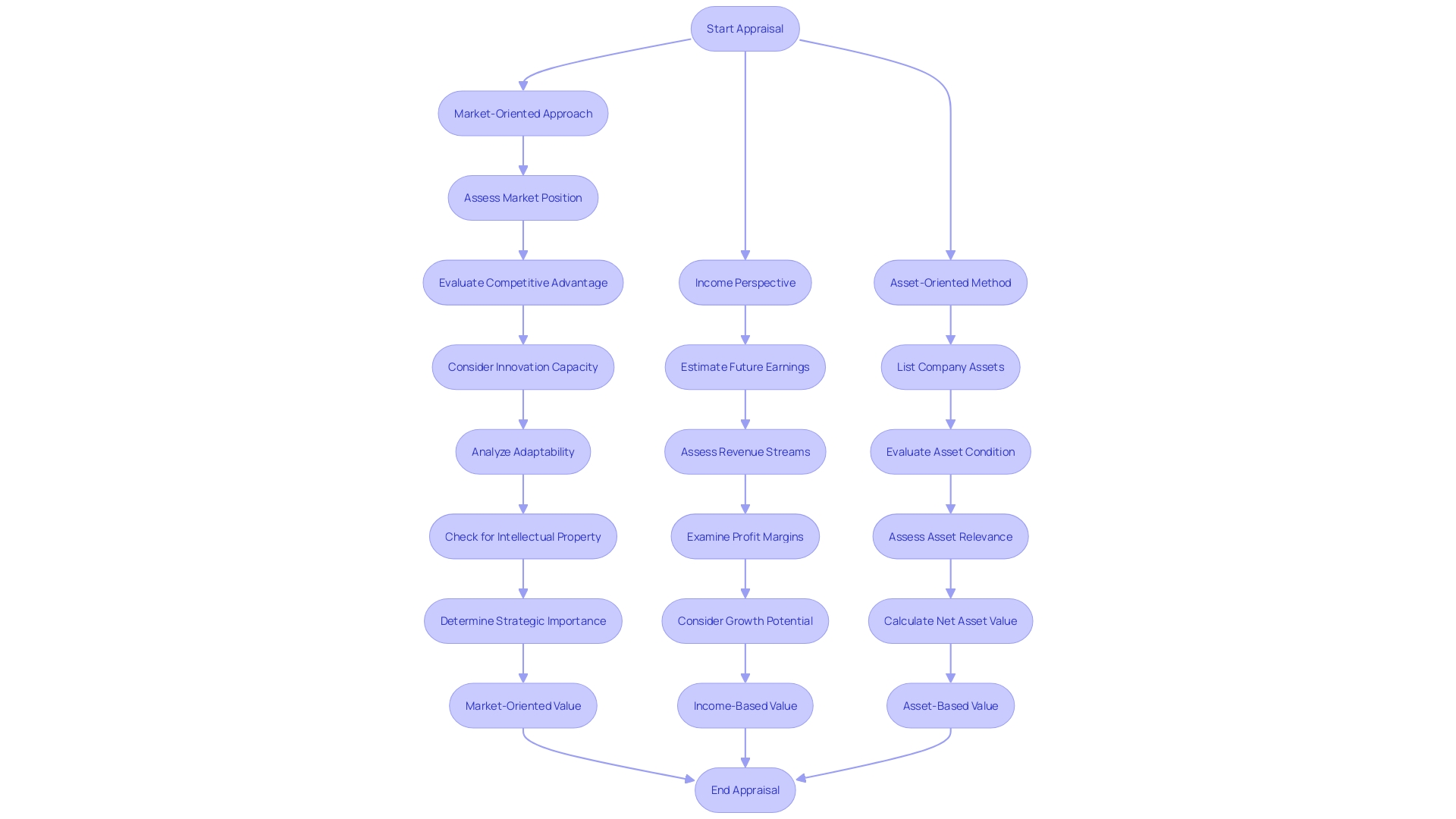
Market-Based Approach
Evaluate the value of a company in the realm of commerce is like appraising a valuable jewel. Each aspect requires thorough scrutiny to understand its true value effectively. By seeking financial transparency, one can utilize the strategy based on industry analysis that closely inspects your company and compares it with other similar enterprises. This technique evaluates the market worth of publicly traded companies, along with the prices paid for recently acquired counterparts.
To showcase the depth of this strategys impact in real world scenarios like the software industry is an example to examine closely. Where the value of a business is closely connected to its standing in the industry and its ability to stay ahead of competitors. A dominant position in the industry generally manifests itself through factors such as a customer following or having cutting edge technology and innovative product offerings at hand. When assessing the performance and potential of such an organization, it is essential to analyze its share in the industry, growth trajectory, and the durability of its competitive advantage.
This assessment is quite important. Is supported by a structured checklist that includes brand reputation, customer loyalty and the extent of market reach compared to competitors. Actually, prominent software enterprises that consistently demonstrate innovation—whether by means of research endeavors or strategic alliances—typically possess a worth, in the industry.
The tale of Kodak serves as a cautionary tale about the perils of disregarding industry trends and changes over time. Their decline highlights the risks of not keeping up with changes. Hence, assessing an organization's capacity to adapt to market demand isn't solely based on figures but also on their response to the constantly evolving market environment.
Furthermore the BBCs coverage of Gilt Edges actions emphasizes how valuation techniques are put into practice in real life. The firms commitment to reducing its impact guided by a carbon calculator tool demonstrates the importance of tools that make complex evaluations simpler enabling organizations to concentrate on vital aspects, for sustainable growth.
The incorporation of types of resources. Such, as money related assets and natural and social capital. In a consolidated perspective of the value of an enterprise demonstrates the evolving character of how companies are evaluated financially. By adopting these strategies, companies not only strengthen their advantage in competition but also bolster their operational structures to empower decision makers in promoting enduring benefits for all parties involved.
Assessing the value of an enterprise through market-driven strategies is a task that goes beyond mere numbers and reflects the overall position of an organization in the constantly evolving market.
Public Company Comparable Analysis
When assessing the value of an enterprise in the realm of business valuation focused on market principles, it is crucial to delve beyond simply examining the financial statements and consider the market environment in which an organization operates. A great example of this is the comparison analysis of businesses, where financial metrics and ratios are evaluated against those of similar enterprises in the industry. What really counts is not only the numbers but also understanding a firm's position, in its sector and its competitive advantage.
When assessing a tech company's performance, factors such as dominance in the industry, growth trajectory, and the sustainability of advantages are crucial. This is because a firms capacity to introduce and adjust to market demands is crucial, in generating worth. Brand awareness, client loyalty rates and industry access are measures of a firms competitiveness in the industry.
Considering Tesla's accomplishments vividly emphasizes this perspective; Even with the fluctuations in stock prices Tesla's story in the industry is influenced by factors such as new product releases like the Cybertruck and their consistent surpassing of earnings projections which affect its value significantly. An important element in shaping these narratives are the individuals involved. From the founders, to sales representatives. Whose actions can greatly impact a firm's financial performance and consequently its total value.
Moreover, the value of an organization is also strongly connected to its intellectual property possessions. The safeguards in position, the association with income streams, and the strategic alignment of the IP are vital in the valuation procedure. A thorough IP assessment can provide insights into the firm's competitive advantage and positioning in the industry.
When utilizing a comparable analysis approach to evaluate the worth of enterprises in the market space, it goes beyond solely relying on financial data; factors such as market positioning strength and competitive advantages also play a crucial role.
Precedent Transaction Analysis
When evaluating a business using valuation techniques based on the marketplace, methods such as precedent transaction analysis are considered. It involves a review of past sales of similar businesses to the one being assessed. By analyzing the selling prices of these companies, a well-informed estimate of the business's value can be derived. This approach emphasizes the significance of market positioning and competitive edge, making it particularly crucial in evolving industries, like software development. Companies that have a presence in the marketplace and demonstrate continuous growth tend to be highly valued in the competitive landscape. For software firms this advantage is often driven by their ongoing dedication to innovation and their ability to adapt quickly to changing demands.
To effectively utilize precedent transaction analysis in evaluating a company's worthiness and position in the industry compared to its competitors is crucial. It involves a deep dive into various aspects of the company such as its market share, loyal customer base, strong brand identity, and competitive standing. These elements are consolidated into a due diligence checklist that covers key areas like brand recognition, customer retention, and market reach. A recent legal decision in the case of Thomas Connelly v. United States further highlights the intricacies involved in determining a company's worth. Highlights the consideration of life insurance benefits when calculating fair value, for acquiring shares from a deceased shareholder. This example highlights the concept that evaluating value extends beyond numbers encompassing a thorough understanding of the various facets of commercial assets and how they impact the economy.
By merging information acquired from transactions with a thorough assessment of the organization's status in the market sector, precedent transaction analysis offers a clear portrayal of a firm's value that effectively encompasses the present complexities and future possibilities.
Income-Based Approach
Evaluating a company's worth based on revenue entails more than analyzing present numbers. It also involves looking ahead to anticipate future earnings potential and risks specific to the organization while considering its capacity to maintain and expand income over time. For example when assessing a tech firms worthiness the method takes into account more than present profits by also factoring in its market standing creativity levels and the robustness of its competitive strengths like customer trust and market reach. Through the incorporation of these evolving elements the income centric approach offers an insight into a company's valuation revealing its genuine prospects, in the business arena.
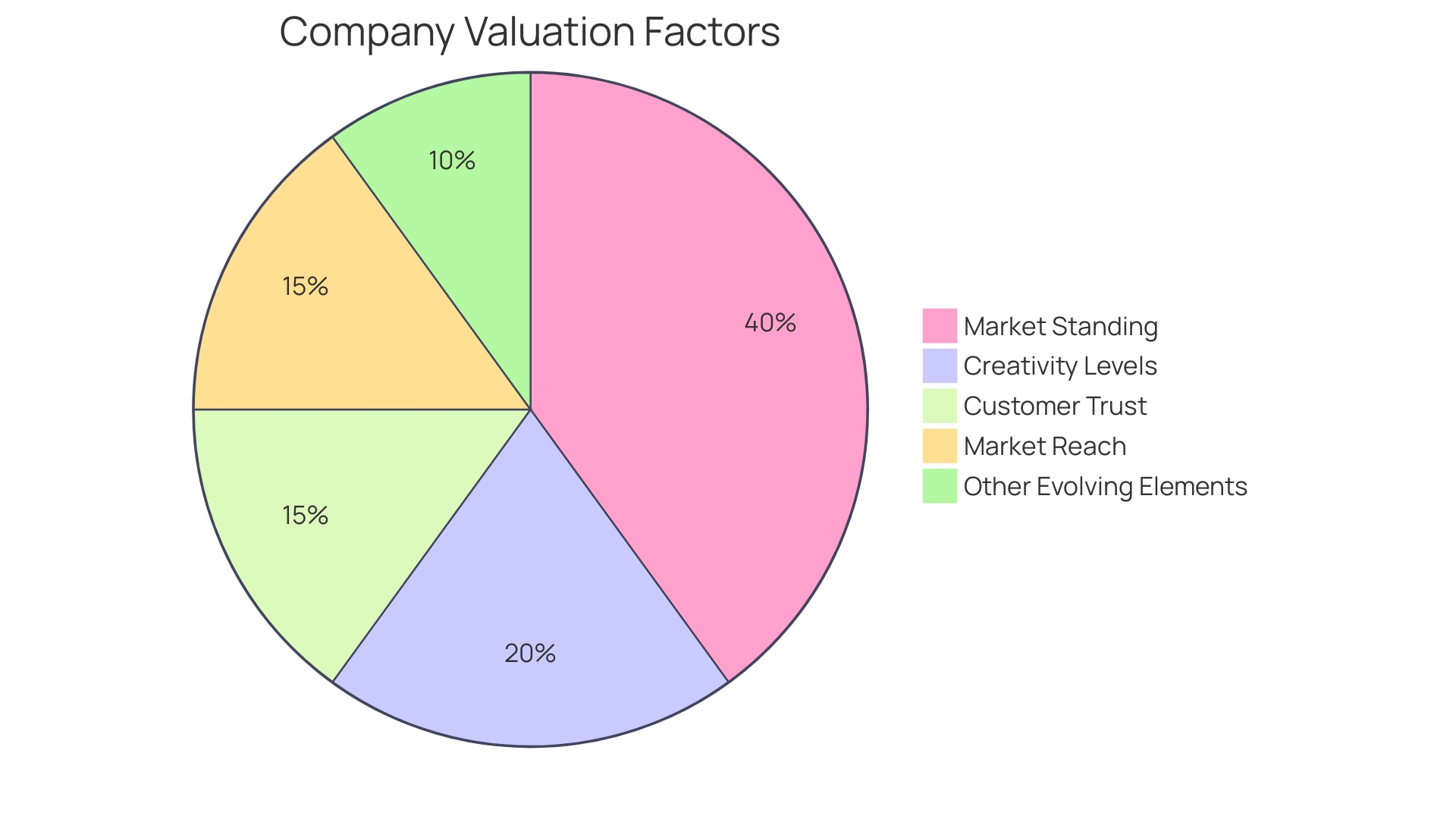
Discounted Cash Flow (DCF) Method
The Discounted Cash Flow (DCF) method is a tool in the income based valuation approach and is especially important for those working in the software industry where financial projections are crucial. This method entails predicting the worth of anticipated future cash flows—a principle reminiscent of Aesop's fables that highlight the worth of immediate assets, versus uncertain future benefits.
The efficiency of the DCF approach originates from the idea of the time worth of money. Asserting that money in hand today is more advantageous than the same amount in the future due to its capacity to generate earnings over time. This principle is crucial in today's landscape and is highlighted by financial advisors who stress the significance of maintaining a readily available emergency fund to navigate unexpected difficulties such, as those witnessed in recent times with the pandemic.
When using the DCF method in real world scenarios; a detailed assessment of projected cash flows is crucial. Involves factors like net income calculation, tax considerations,changes in working capital and capital expenses. However it should be remembered that while DCF is theoretically robust in practice its precision is frequently questioned due to the need for assumptions. This is particularly true, in the evolving software industry where forecasting long term finances comes with its share of uncertainties and complexities.
In the 1992 Berkshire Hathaway Annual Report Warren Buffett highlighted the importance of valuation by mentioning John Burr Williamss Theory of Investment Value. He stressed that the worth of any stock, bond or business is determined by the cash inflows and outflows discounted at a relevant interest rate over the assets remaining lifespan. This emphasizes the need, for a valuation model that considers current conditions and future prospects.
In the realm of software firms where staying ahead through innovation and adaptability is crucial for gaining an edge over competitors, assessing market status plays a role in determining worth. A robust market position highlighted by elements like brand visibility and customer loyalty tends to result in a valuation owing to the promising outlook, for continued expansion and success.
In the world of software valuation, complexities abound; therefore it's advantageous for companies to engage professional valuation services when facing important financial choices like lawsuits or deals to ensure clarity and confidence in determining a company's value and making informed decisions, for stakeholders.
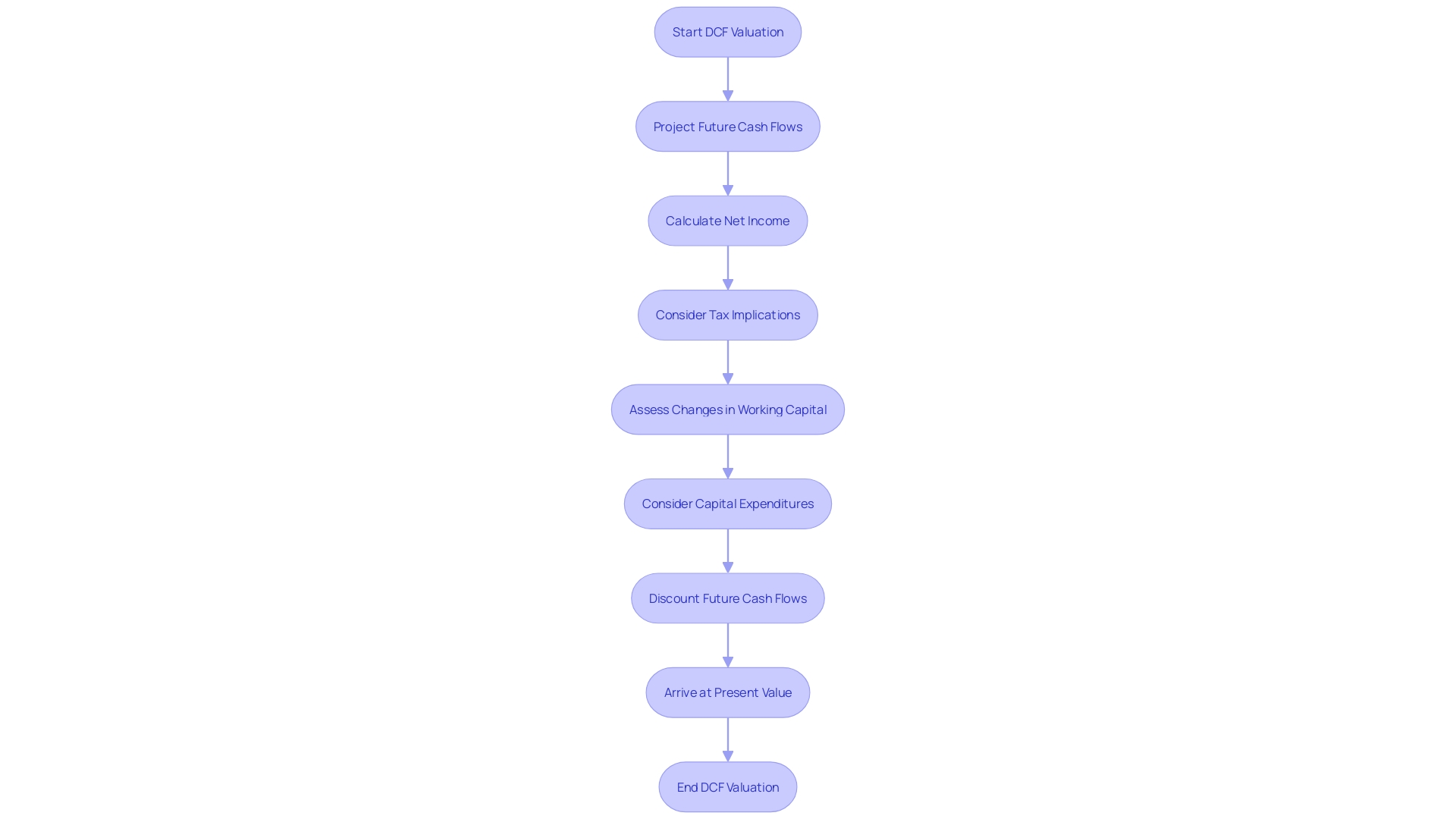
Capitalization of Earnings Method
Assigning a value to a company entails factors to take into account and can be quite intricate when employing the capitalization of earnings technique as a component of the income-based valuation approach. This technique involves assessing the projected earnings of an enterprise and dividing them by a selected capitalization rate that represents the associated risks of the organization. In the context of a software firm like in this case study example it's important to consider its position in the industry and the strengths it has over competitors like a dedicated customer following or leading edge products and technology innovations brought to the marketplace by them directly or indirectly through partnerships formed over time as part of their strategy to excel in the industry they operate within where specific details matter just as much as broad strokes do because every company is unique which means what works for one might not work for another depending entirely upon circumstances surrounding each individual case study making it imperative to delve deep into specifics such as customer loyalty rates or cutting edge tech offerings among other things that separate winners from losers ultimately when all is said and done at the end result of any thorough analysis done properly without missing anything important whatsoever down to the smallest detail imaginable even if seemingly insignificant, at first glance oh yes indeed.
Recent financial results shared by firms such as Charles Schwab showcase the impact of earnings reports on market views and valuations when surpasses expected earnings per share figures are revealed to analysts and investors. It's crucial to remember that while striving for growth and expansion in industries like technology and social media is vital today; one should not overlook the significance of a business model and profitability, in the long run.
In summary the approach of capitalizing earnings goes beyond number crunching; it involves a comprehensive evaluation of a company's financial status competitive standing and future outlook. This method involves exploring the complexities of the business and its sector to determine a valuation that takes into account not just its current earnings but also its potential for creating long-term worth.
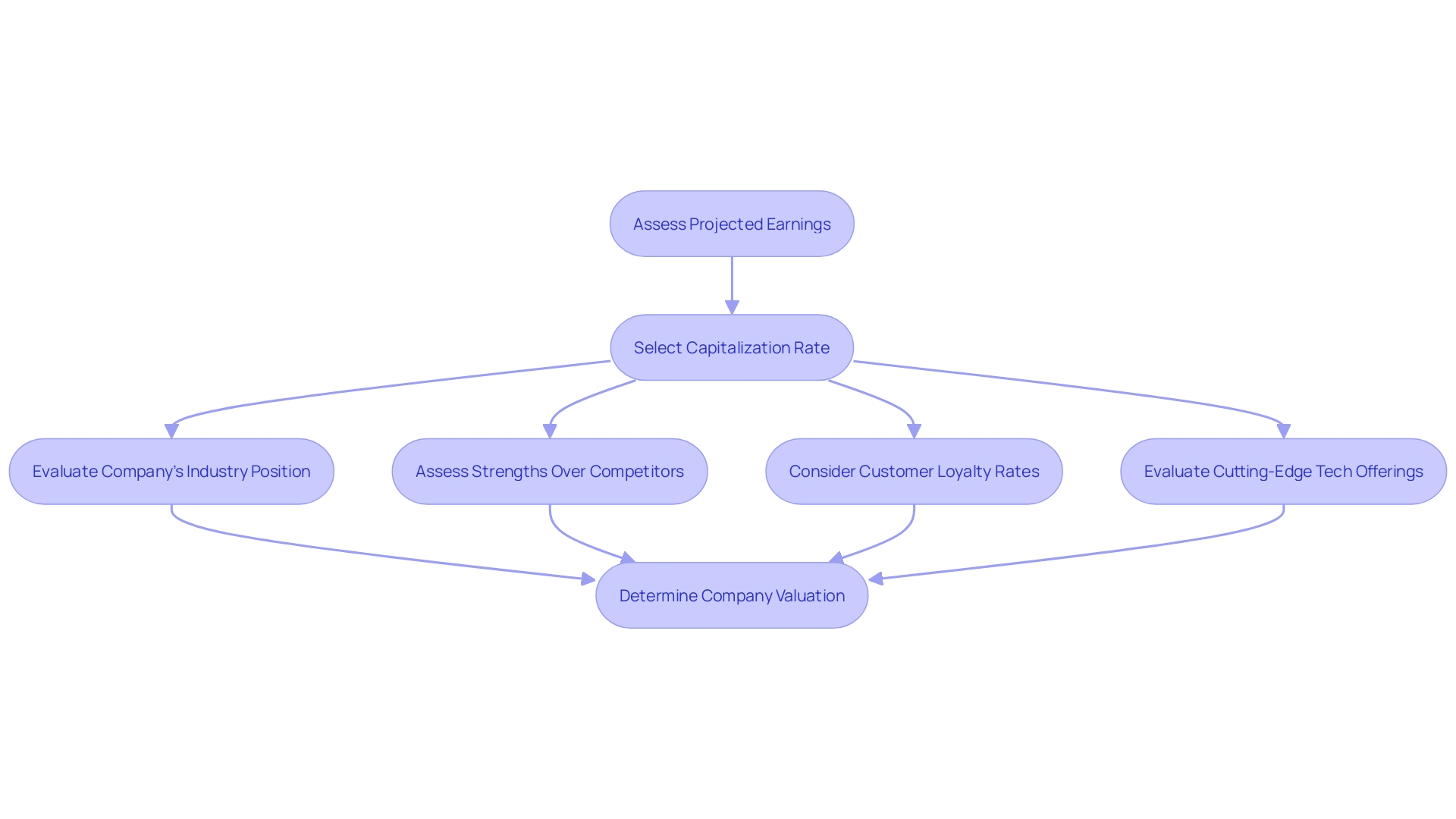
Asset-Based Approach
When assessing a business, it's crucial not to concentrate solely on the superficial aspects but also consider the genuine worth of all the assets it owns. Both tangible and intangible ones. The asset based approach involves assessing a firm's assets which includes everything from its physical equipment and inventory to intangible assets such as intellectual property and brand reputation. This method delves into examining the book value of assets and their ability to generate profits, in the future.
When evaluating the assets of a software organization as an illustration, it necessitates an analysis of its standing in the industry and competitive advantages. An organization that maintains a position in the market as evidenced by factors like a dedicated customer following, distinctive products on offer or advanced technological solutions might possess intangible assets that enhance its total worth. Intellectual property plays a role, in the software sector where innovation reigns supreme. An organization's intellectual property assets such as patents and trademarks contribute to its financial success and achievement of strategic goals.
Moreover, in a setting where enterprises are giving more importance to growth and progress, understanding the complexities of an organization's resources becomes more and more crucial. The competitive advantage of a business shaped by its ability to introduce ideas and adapt to industry shifts can greatly influence its worth. For instance, an organization that has shown success in research and development or strategic acquisitions often holds significance due to its potential for ongoing expansion and influence, in the industry.
The comprehensive evaluation process extends beyond analyzing share in the marketplace and trends in growth; it also entails assessing the long-term sustainability of a firm's competitive advantage. Evaluating these factors involves delving into aspects such as brand reputation and customer loyalty levels while comparing the firm's presence in the marketplace with that of its rivals.
It's evident that conducting an asset based evaluation involves more, than just crunching numbers – it entails grasping the key value influencers that set a business apart in today's fiercely competitive environment.
Asset-Based Valuation Formula
Recognizing the value of a company involves more than just analyzing figures – it requires a combination of financial expertise and an understanding of the company's strategic position in the market environment. When evaluating an enterprise in dynamic sectors like the software development industry, it's essential to consider factors that contribute to sustaining its competitive edge. These elements encompass aspects like the business's share in the market space efficiency, in innovation and ownership of intellectual property rights (IP).
In the software sector and beyond, it's not about the physical possessions that companies possess; their technological advancements and brand image are equally significant along with customer devotion to establish a presence in the industry. The game-changing scenario revolves around innovation and responsiveness to the industry, where the evaluation of assets is vital. However, it is important to consider both the visible tangible assets and the intangible ones that define the essence of a business with a unique perspective.
Professionals frequently stress that assets are elements that contribute to a firm's worth, such as monetary reserves or equipment, while liabilities symbolize the commitments owed to external parties.. Assessing the worth of an enterprise entails more than merely deducting debts from assets; it necessitates a thorough examination of economic conditions, such as potential for expansion and the caliber of intellectual property possessed by the organization.
The importance of these distinctions in determining worth is emphasized by initiatives such as the 'Corporate Value Up Program,' introduced by Deputy Prime Minister Choi Sang mok to enhance corporate worth by adjusting policies and providing tax advantages. This indicates an increasing recognition of the intricacy involved in evaluating enterprises.
Essentially, the asset oriented evaluation approach serves as a tool; nevertheless, it is the comprehensive analysis of competitive strengths, positioning in the industry, and intellectual assets that truly encompasses the essence of a firm's worth. These factors when evaluated accurately can lead to a precise and comprehensive understanding of a business's worth, in today's market landscape.

Book Value Method
Assessing the worth of a company involves looking beyond adding up assets and subtracting liabilities. That's essentially what the book value method is about. Particularly in fast-paced industries like technology where positioning and innovative advantages are crucial. A technology company that holds a position in the industry and has a track record of growth with an edge over its competitors typically garners a higher evaluation. This is because factors such as brand recognition and customer loyalty, in addition to reach, are assets that have significant importance but may not be completely reflected in financial statements. Additionally, the evaluation is closely tied to the excellence of the organization's intellectual property assets such as patents, trademarks, and exclusive technologies that safeguard and propel the firm's revenue sources and strategic objectives. Examining intellectual property rights is therefore a vital component of the assessment process to ensure that the organization's innovative efforts and capacity to adjust to market fluctuations are adequately recognized in its overall worth.
Key Business Valuation Formulas
When assessing a company's worth beyond metrics such as P/E ratio and EBITDA multiples or ROI, it is essential for a comprehensive evaluation of its value proposition. Especially for tech companies, where intangible assets such as brand reputation and patents are influential in determining their overall worth. Aspects that can't be fully quantified by conventional financial measures alone. In the corporate environment today it is vital for a software company to not only have a firm grasp in the industry but also demonstrate continuous expansion and inventive approaches to stay ahead of rivals. Whether through research and development initiatives alone or by strategic mergers and acquisitions as means to strengthen their position in the industry which can significantly boost their overall value assessment process taking into account factors such, as brand reputation customer loyalty and market reach. Moreover' the strength of the firms intellectual property holdings such as patents and confidential information can significantly impact its worth by showcasing its potential, for earnings and strategic advantages.
Steps to Perform a Business Valuation
Assessing the worth of a company involves more than number crunching. It's a detailed process that starts with gathering thorough financial information as the foundation of the valuation process itself. Once the data is in place comes the crucial decision of selecting a valuation approach tailored to fit the characteristics of the business and its industry specific intricacies. For instance, the worth of a technology firm relies heavily on elements such as its industry presence and competitive advantage. The competitiveness of a software firm can be measured by factors such as its market share growth trends and innovative capabilities when assessing its worth.
After selecting and implementing the suitable approach, a comprehensive evaluation is carried out that takes into account various aspects of the industry and economic patterns. As exemplified by Applied Cartography's experience in acquiring and overseeing companies, it underscores the importance of acknowledging the unique offerings and capabilities of each organization entity. These practical situations highlight the significance of evaluating a company's capacity to sustain its competitive advantage, such as its brand image and customer allegiance.
It is crucial to have records of the results not only for transparency but also for strategic planning and decision making purposes. Referring to instances like Gilt Edges utilization of a carbon calculator to monitor emissions acts as a reminder of the importance in maintaining an accessible database of data points for goal setting and progress tracking. Likewise a comprehensive business valuation offers a roadmap, for development and adaptations.
This approach to determining the worthiness of an organization combines analysis with subjective evaluation to establish a strong basis, for evaluating its merit. It involves examining specifics while taking into account industry trends and effectively analyzing and consolidating a wide range of data points.
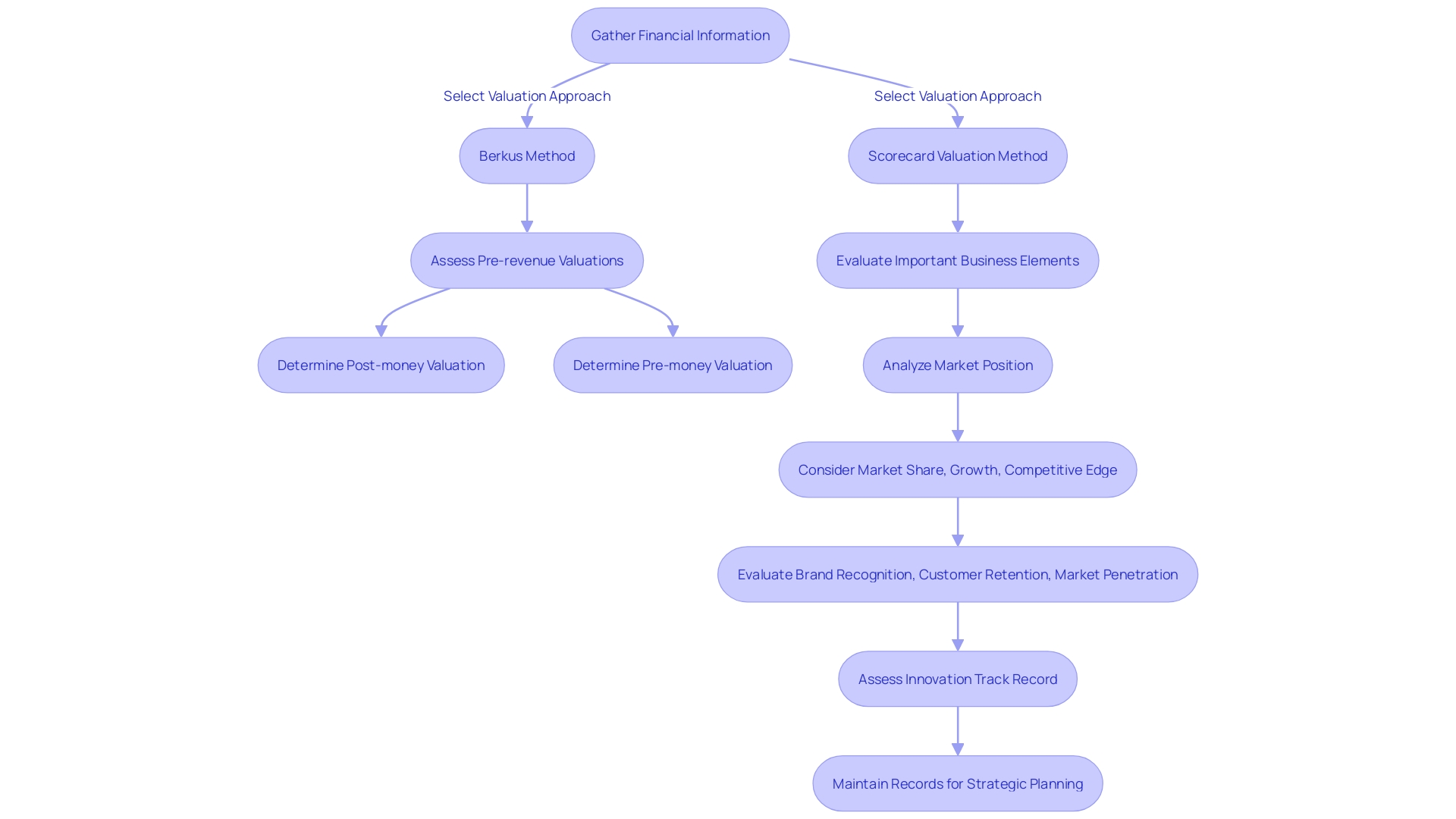
Common Challenges in Business Valuation
Evaluating the value of an organization encompasses a method that becomes particularly intricate in the software industry due to the significance of intangible assets and future potential growth possibilities. One of the obstacles in this evaluation is determining a company's position in the industry since it serves as a crucial factor in determining its value. A strong presence in the industry. Reflected through a share and consistent expansion. Can indicate a strong competitive edge rooted in factors, like loyal clientele base or cutting edge technological solutions.
To evaluate the position of a software firm in the industry thoroughly is crucial by examining its share trends and growth patterns while also gauging how sustainable its competitive advantage is over time. An extensive evaluation checklist for this analysis should encompass factors such as brand visibility among consumers, customer loyalty rates and how efficiently the organization penetrates the industry in comparison to its counterparts. These elements provide insights into the company's strength and potential, for expansion.
In the software realm a competitive edge often arises from innovation and the ability to adapt to changing needs. Companies that pour resources into research and development or make strategic acquisitions are usually valued more highly showcasing their dedication to advancement and staying relevant in the market.
Furthermore, the language utilized in finance circles, which is predominantly founded on accounting terms, contributes to performing corporate financial evaluations or accurately ascertaining value. It is crucial to grasp the differences between operating profits and net income, as well as the characteristics and limitations of financial statements, for accurate valuation purposes.
The ongoing economic situation as described in the Survey on Business Conditions for the initial and subsequent quarters of 2024 plays a role, in the valuation process as it can affect a firm's expansion rate and how its assets are assessed—necessitating a flexible valuation method that considers both current circumstances and potential future scenarios.
In essence when it comes to evaluating businesses in the software sector it's essential to take a rounded approach that looks at aspects like market standing competitive edge, creativity, and economic conditions.. By tackling these issues with, in depth examination and insightful planning companies can determine their worth and make well informed choices for what lies ahead..

Tools and Software for Business Valuation
Delving into the intricacies of determining a company's demands accuracy and speed – this is where cutting edge tools and software step in to assist. Such solutions effortlessly combine characteristics to streamline the evaluation process by providing immediate analysis and comparisons. To demonstrate this in the changing realm of technology and online enterprises, valuation software can collect insights about the marketplace to assess a firm's competitive position - a crucial element that affects its overall worth. Examining the extent to which the market is captured and observing how the enterprise is expanding over time are significant factors to take into account. In addition to what distinguishes a business from its rivals like having devoted customers or providing distinctive products and technologies that are ahead of the curve. Using these tools not only saves time within the organization but also makes things more transparent for everyone involved in the business. As things change in the valuation world and new ideas come up for evaluating companies worth; these digital solutions become players in making sure decisions are accurate and well informed. Showing a shift, towards newer and more flexible ways of doing valuations.
Conclusion
Ultimately when evaluating a companys worth it's more than about analyzing numbers alone; elements such as market position must be taken into account alongside factors like brand visibility and customer trustworthiness as they all contribute to the overall valuation of a business entity considering aspects, like prevailing market conditions and the distinct qualities of the business are equally important aspects to factor in as part of this evaluation process.
Various methods used to assess a businesss value consist of the market driven method. Income based method. Discounted cash flow (DCF) asset centric approach and precedent transaction analysis approach Each method offers a viewpoint based on the companys stage of development and goals.
Assess the worth of a company involves analyzing its financial healthiness and competitive position as well as forecasting its future prospects.The complexities, in valuing a business include evaluating its market position and competitive edge while comprehending terminology.. Through detailed examination and a well rounded perspective businesses can ascertain their value and make knowledgeable choices.
Cutting down the valuation process is made easier with the use of tools and software options that are currently accessible, for this purpose The availability of these tools allows for quick value assessments and comparisons which in turn makes the evaluation process simpler and more precise.
To sum up the process of determining a companys worth involves an assessment that takes into account financial metrics market trends and distinguishing business characteristics With the help of various tools and software options businesses can make knowledgeable decisions to ascertain their real value in todays challenging market environment.
Ready to determine the worth of your company? Get a comprehensive assessment today!




